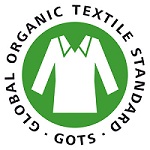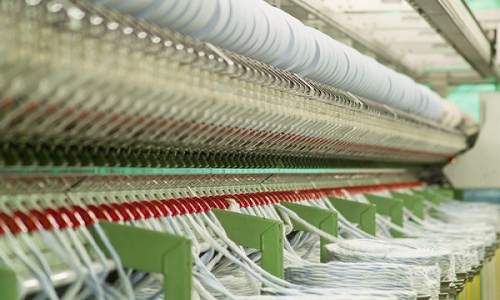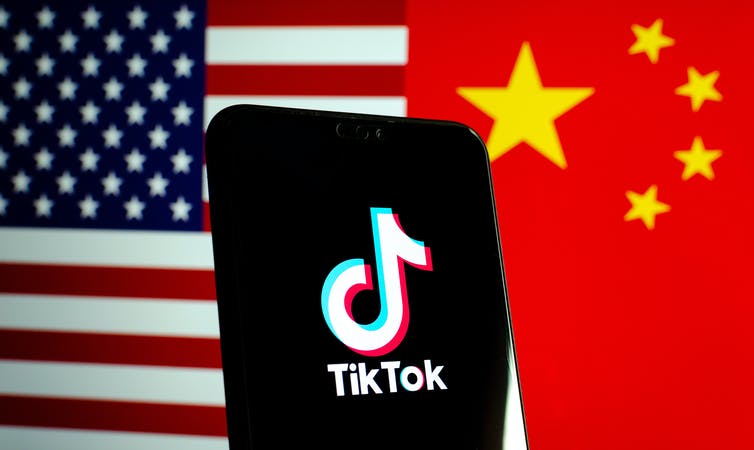FW
The Global Fashion Agenda, in collaboration with The Boston Consulting Group, published a ground-breaking in-depth assessment of the fashion industry's environmental and social performance the first edition of the Pulse of the fashion industry report. The findings will be presented at this year's Copenhagen Fashion Summit (CFS), to take place on May 11, at the Copenhagen concert hall.
In the past decade, the global fashion industry has been an engine for global development and made progress on sustainability. Awareness is growing and individually, companies are optimizing business practices to limit their negative impact. But with current trajectories of production and consumption, pressures on natural resources and social conditions will intensify by 2030 to the point of threatening industry growth itself.
The Global Fashion Agenda has made an in-depth assessment of the industries environmental and social performance it offers the first comprehensive common fact base on the health of the industry with a "Pulse Score" by type of company, size, region and stage in the value chain.
Improving its environmental and social performance would not just advance the industry's commercial prospects, it would also add as much as €160 billion by 2030 in annual value to the world economy. To point the way toward a better fashion industry, the Pulse of the fashion industry report lays out the "Landscape for Change." Yet it also shows that even if most of the industry implemented today's best practices individually, it would not be enough to capture this value and close the gap.
The industry can move beyond fragmented individual actions with incremental results. Through collective efforts the industry can unite around an agenda for change, drive the needed systemic change and work jointly on disruptive innovation.
The fashion industry has a clear opportunity to act differently, pursuing profit and growth while also creating new value for society and therefore for the world economy. It comes with an urgent need to place environmental, social and ethical improvements on management's agenda.
Indorama Ventures’ net profit for the first quarter 2017 has risen eight per cent compared to the same period last year. On a year-on-year basis, production was up by 24 per cent and sales revenue was higher by 25 per cent. Core EBITDA for the company grew by 60 per cent.
This change in the quality of earnings is a reflection of the strategic fit of the company’s acquisitions of selected portfolios. The quarterly performance benefitted from expanded margins from successful integration of the high value added and other assets acquired in 2016.
Diversification into high value added assets, which now accounts for 50 per cent of overall core EBITDA, has enabled the company to deliver robust earnings on a sustained basis. The high value added business is further segmented in three distinct and high-growth industry verticals, namely automotive, hygiene and industrials.
Indorama Ventures is a leading chemical producer and had a strong start to 2017 performing very well on all of its key performance indicators. It continues to outperform and deliver industry-leading performance despite continuing industry over-capacity. Robust earnings and significant EBITDA growth in the quarter and last 12 months is a reflection of the successful deployment of its focused strategies of earning diversification, growth in key geographies and value-enhancing integration.
Deakin University researchers have come up with 'circular denim' to reduce the huge environmental impact of denim production. As a part of their entry into the Global Change Award, they developed a unique process that produces ultrafine particles from used denim, and then coats or prints the colour particles to create typical denim appearance.
The Global Change Award, an initiative of the H&M Foundation gave $1 million seed funding to five winning teams that promote sustainable fashion. Xungai Wang, Rangam Rajkhowa, Nolene Byrne, Christopher Hurren and Rebecca Van Amber have developed the 'circular denim' concept that was awarded $150,000 to take their idea to industry. The team was one of five winners, out of a total of 2885 entries from 130 countries, to share in the prize.
As per Want, the team had already developed a successful prototype and the Global Change Award grant would be used to scale up the idea and work with denim producers and fashion brands to explore its potential for the fashion industry and the environment. He further added denim was the single largest apparel item on the fashion market and traditional denim production had serious environmental impacts. Denim recycling is a huge issue worldwide and currently, old denim products are dumped in landfills, and dye run-off from denim production can pollute local water supplies.
This process is unique in that it not only recycles the fibres but also the dye, says Wang, adding that if necessary, the colour of the fine particles can be enhanced or changed easily before the coating or printing process, providing new fashion opportunities for consumers.
Chic autumn will take place in China from October 11 to 13, 2017. The main focus will be on spring/summer collections. Italy and France will put up pavilions. Chic autumn expects around 800 exhibitors from China and other Asian nations, as well as from Europe and America.
Chinese consumers are becoming more selective and individual. And there is a strong trend of trading up in their buying behavior. Instead of mass production, they prefer premium products. And Chinese like to shop online. China is the world’s largest e-commerce market. Retail in China is changing and increasingly merging with entertainment. Two thirds of Chinese go shopping with their family or friends. Shopping malls are shopping and leisure temples: fashion combined with entertainment like arts and educational spaces as well as with food and beverages.
Chinese designers are becoming edgy and experimental. Masculine and feminine elements are merging in oversized silhouettes and relaxed fits. Gender dynamics are the core concept behind the texture aware collection combining furry sweaters with nylon pants and corduroy jackets.
Second and third tier cities are expected to be the source of the country´s rapid growth. While first tier cities account for only nine per cent of China´s population, about 300 million people are living in smaller cities. Consequently, they are a focus of international business and already dispose of an interesting retail landscape.
The readymade garment industry in Bangladesh will have to focus on three key elements: positive promotion of branding, technological capability and interest of economy, say experts. There was a shortage of capacity in the readymade garment industry but now the situation has changed as there are technologies available. At present the country has only a six per cent share of the global market in readymade garments. It is looking to have a bigger share. Machinery and technology have to be modernized.
Since online selling and buying has increased in the global market, 96 per cent of the goods being bought are being bought at a discount or bought with different offers. As a result, buyers are unwilling to pay more to suppliers. With the recent fluctuation of different currencies, the country has to take measures to keep the value of its currency stable.
Spain has a much higher cost of labor than does Bangladesh but has still managed through the use of technology to be competitive in the clothing industry. Similarly Italy and Mexico use technology to reduce the cost of production of their products. Bangladesh has a goal of doing $50 billion in readymade garment exports by 2021.
Bangladesh Denim Expo will be held from May 17 to 18, 2017 in Dhaka. The theme for the expo is ‘Denim Networks’ and will highlight the importance of developing understanding and relationships in the denim industry. The aim is to connect experts, brands, retailers and the industry’s top players in order to share a global approach toward the main challenges.
Exhibitors from 12 countries -- Bangladesh, China, India, Turkey, Spain, Italy, Pakistan, Japan, San Marino, Germany, Brazil and Hong Kong -- are expected to take part. The trend zone area, the unique space dedicated to showcase latest denim trends and innovative products, has been expanded in parallel, incorporating a new information exchange zone where visitors will be able to gain insights into denim fabrics, styling and finishing available in Bangladesh, together with a select offer of the most relevant denim publications. Bangladesh Denim Expo has been conceived of as an international strategic hub to attract the most interesting and innovative denim-related projects.
"India continued to maintain top position in a row with 1,488 GOTS certified facilities. GOTS is also a part of the QCI-UNFSS India National Platform on Private Sustainability Standards, launched in 2016 by the Ministry of Commerce. GOTS representative in India Sumit Gupta is a member of the textile subcommittee in this platform. Interest in GOTS certified organic textile products is on the rise in India both among consumers and industry. India also recorded a rise in the number of brands and stores selling GOTS certified textiles."

India continued to maintain top position in a row with 1,488 GOTS certified facilities. GOTS is also a part of the QCI-UNFSS India National Platform on Private Sustainability Standards, launched in 2016 by the Ministry of Commerce. GOTS representative in India Sumit Gupta is a member of the textile subcommittee in this platform. Interest in GOTS certified organic textile products is on the rise in India both among consumers and industry. India also recorded a rise in the number of brands and stores selling GOTS certified textiles. Closer home, Bangladesh maintained fourth position with 331 facilities. In fact, Dhaka hosted a successful national seminar on GOTS Certification in November 2016, which was attended by 170 people from five countries.
Increasing organic growth

The number of GOTS certified facilities went up from 3,814 facilities in 2015 to 4,642 facilities in 2016. These are spread across 63 countries around the world. Growth is continuously is evenly spread across all market segments including the mass market and big brands. GOTS certification covers the processing of organic fibers along the entire supply chain from field to finished products.
Countries or regions with the largest increase in GOTS certification in 2016 are: Bangladesh on top with +121 units; China (+68), Italy (+54), Germany (+41), India (+47) and Pakistan (+30). The top three countries based on total number of certified entities were: India (1,488), Turkey (423), Germany (347). “The significant growth in numbers of GOTS certified facilities shows the willingness of more and more decision makers not only to drive change by complying with the strict GOTS criteria but also to prove this change by undergoing an independent third party certification,” says Herbert Ladwig, MD, GOTS. To date, the 18 GOTS accredited independent Certification Bodies report more than 1.4 million people in 4,354 (out of the actual 4,642) working in GOTS certified facilities.
For GOTS, 2016 was a revision year resulting in the release of GOTS Version 5.0 on March 1, 2017. The key changes in brief: The use of Viscose and Modal (additional fibre content) is now restricted to 10 per cent (25 per cent for sportswear and socks). Lyocell fibre made from certified organic or FSC sources may still be used up to 30 per cent because of its sustainable manufacturing processes. For the first time, GOTS will allow ‘Combined Products’ such as prams with textile fabrics, bassinets, car seats or furniture with textile fabric upholstery to have certified and labelled textile components. As for GOTS social criteria, an explicit section on Ethical Business Behaviour including a corruption ban was added, based on UN Global Compact Principles. The mandatory GOTS Social Compliance Management System for the first time includes guidance on the use of tools such as SAI Social FingerprintTM to help companies measure and improve their social performance.
The Alliance for Bangladesh Worker Safety has during March-April, 10 more Alliance-affiliated RMG factories completed all material components outlined in their Corrective Action Plans (CAPs). This pushes up the total number of factories that have completed CAPs has now risen to 76.
Alliance country director Jim Moriarty says these companies have made commitment towards worker safety by completing their corrective action plans. Their focus on remediation reflects the broader push that has transformed safety in Bangladesh’s RMG industry and directly translated into lives saved. Meanwhile, the Alliance continues to enforce accountability measures for factories that fail to prioritise remediation. In March and April, it suspended nine factories from the Alliance compliant factory list, bringing the total number of suspended factories to 146.
The Alliance was formed by North American retailers including Walmart and Gap after the Rana Plaza building collapse in April, 2013, that killed more than 1,100 people, mostly garments workers. Under a five-year plan, the Alliance has set timeframes and accountability for inspections and training and workers empowerment programmes.
A conference on innovative and water efficient processes in the textile sector will be held in New Delhi on May 18, 2017. The conference is being organised with a view to create awareness to deal with the challenges with regard to new regulations and guidelines and learn about increasingly advanced treatment technologies, innovative strategies geared towards water and wastewater reuse and resource recovery.
The conference will be attended by prominent stakeholders from the textile industry, relevant authorities from the Central and State Pollution Control Boards and other experts to deliberate upon the challenges being faced by the sector and showcase national and international best practices from progressive and futuristic companies.
The Central Ground Water Authority and the National Green Tribunal have issued directions to ensure that all existing, new and expansion industries or projects extracting ground water should obtain permission from the Central Ground Water authority.
The textile industry has a strong impact on climate. Water is used extensively throughout textile processing operations. There is an urgent need for making efforts toward reducing the use of fresh water in various processes and making use of technologies that treat and reuse process water as well as treated wastewater. The event is being organized by the Confederation of Indian Industry (CITI).
A Youth Fashion Summit will take place in Denmark from May 9 to 10, 2017. This will attract students from around the world. Young talents will engage in discussions about the industry they will soon inherit and how to address the major problems of fashion manufacturing and consumption. They will draft and negotiate the first-ever United Nations resolution on fashion.
The resolution will be negotiated with industry leaders such as H&M and Swarovski and NGOs such as Greenpeace before being presented on stage at Copenhagen Fashion Summit on May 11. Later this year, the resolution will be presented to the UN in New York. The Youth Fashion Summit is a collaboration between Global Fashion Agenda and the Copenhagen School of Design and Technology in partnership with Swarovski.
At last year's Youth Fashion Summit, students explored how the 17 UN Sustainable Development Goals represent opportunities for companies to align their sustainability goals with broader societal aims: from gender equality and poverty reduction to responsible consumption and climate action.
Educators and fashion education leaders will meet prior to Copenhagen Fashion Summit for their respective events, Educators Summit and Academic Leaders Roundtable. While Educators Summit is a platform for teachers to exchange ideas and experiences on how to effectively teach sustainability and build a strong international network around it, Academic Leaders Roundtable convenes the most influential decision-makers from across fashion education, industry and non-governmental organizations for an intimate discussion informing the development of sustainability in global fashion.











